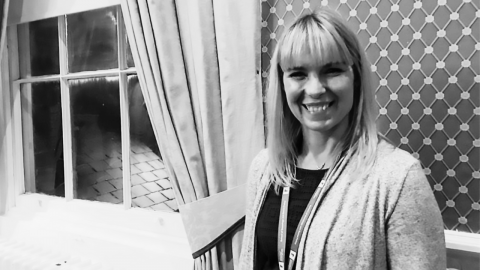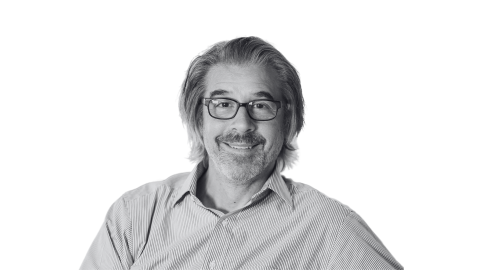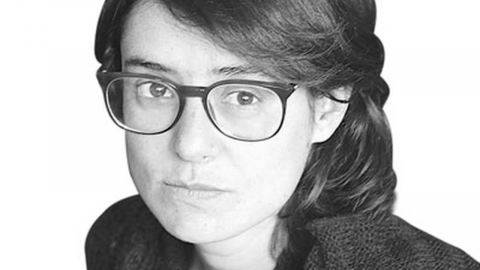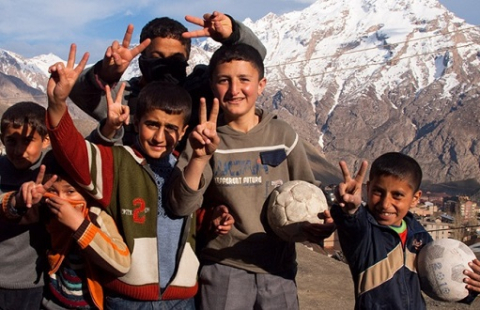
Restorative Justice Interviews (3): Dealing with the past and building more just societies
Interview: Noémi Lévy-Aksu
Hafıza Merkezi has started to work on a new project called Justice Heals, to understand the unique dynamics and patterns of the Kurdish conflict and related gross human rights violations in the 2000s. More specifically, we focus on documenting violations of the right to life against Kurdish children and youth between 2000 and 2015. Inspired by the principles of restorative justice, our objective is to develop a holistic approach in response to the spiral of violence created by these violations, with a special focus on children and youth. To this end, we are starting a new series of interviews with the aim of discussing different theoretical and practical approaches to restorative justice.
For previous interviews in the series:
▶ Restorative Justice Interviews (1): Structural dimensions of injustice and restorative dialogue
For our third interview, we talked to Jennifer Llewellyn, who holds the Chair in Restorative Justice at Dalhousie University. An international expert in the area of restorative justice, Professor Llewellyn has advised governments and NGO’s and supported many governments, projects and programs, including the South African Truth and Reconciliation Commission. Llewellyn also facilitated the design process for the first ever restorative public inquiry (into the Nova Scotia Home for Colored Children) and served as a Commissioner for the Inquiry. She has co-edited two books in the area: Being Relational: Reflections on Relational Theory and Health Law (UBC Press, 2011) and Restorative Justice, Reconciliation and Peacebuilding (Oxford University Press, 2014). In this interview, we discussed the meaning and ethics of restorative justice, as well as its relevance to contexts where impunity prevails and rights violations continue. Llewellyn also gave us an insight into the unique case of the Nova Scotia Home public inquiry, which used restorative justice principles to address systematic abuses perpetrated against vulnerable children.
How would you define restorative justice in a few words?
It is very important to start with this question of definition and to consider the implications of this idea of restorative justice. The foundational understanding that underlies restorative justice is a relational idea of justice: we need to understand justice as fundamentally concerned with just relations. That helps us understand what our obligations are when and where we find injustices
People often misunderstand restorative justice, as if it were about restoring a prior state of good relations where everything was just and good. Instead, it is more helpful to think about restorative justice as committed to the understanding that we need a commitment to mutual care and concern from one another and in the structure of our society and our institutions. Where are our relationships not just? Where are we causing harm to one another? What would help? And can we create the connections and the understanding needed to pursue justice to build just societies?
What are the implications of this definition in the context of gross human rights violations?
Contexts where there are large scale societal harms and injustices reveal and amplify our understanding of what is unjust, what is right, what injustice looks and feels like, and what justice requires.
You cannot look at the circumstances and situations of gross human rights violations and tell a story that retributive justice or the liberal, individualist kind of Western justice systems would tell, where we look for the individual to blame. We isolate them, we punish them, and we think that we have balanced the scales and that justice is done. If that is what we do, we make no difference to the circumstances and conditions in which people live and connect with one another, and we do not secure justice for the future. We are not building the conditions for just relations and just societies.
Gross human rights violations are not only about bad people, bad individuals, monsters. There are conditions that facilitate and allow and encourage and require people to show up in those ways. We can't properly understand the individual actions and responsibilities if we don't replace them in a collective context. A restorative approach requires us to pay attention to how these things are connected. Of course, we look at individual responsibility, but the challenge when dealing with gross human rights violations is to build processes which both call individuals to accountability but also allow them to understand the harm they caused and the way that they can contribute to building just relations going forward.
These processes can't just be about judging an individual and meting out a penalty to them, while some other, separate, group writes a report about how the world will be better. We need to encourage and support the involvement and commitment of individuals who are going to continue to live and exist in this society. Justice requires a process through which they can contribute to understanding the conditions in which harm and injustice could be happening at the individual level, and be part of the collective perception that they can build a different society. This is often the problem with Truth Commissions, if they operate at a societal level and collective level in ways where the narrative of what happened and what should be different is not owned and developed in real time by those who have both participated in and been affected by the rights violations.
To what extent does this approach respond to the expectations of the victims, who often express that there cannot be justice without the accountability of the perpetrators and the end of impunity?
In the current context, justice is most often understood as aligned with what legal systems and what legal structures and formal structures will deliver. While state institutions are involved in gross human violations, the society and particularly the victims have lost trust and faith in these institutions. They are left with the understanding that the only avenue to get justice is through those very institutions and structures that have failed them at the national or international level.
If you define justice in a formal and legalistic way, connected to a punitive system, then, of course, the measure of justice will be how much punishment is enforced. Given how pervasive the current western punitive justice narratives and institutions are it is understandable that this would shape people's expectations for justice. This means that we shouldn't be aiming to convince people that they shouldn't want this version of justice while that is often all that is on offer. Instead we should focus our efforts in support of engaging victims in conversations about what do they actually need in order to feel safe, to be genuinely acknowledged, to be empowered to imagine a future world in which they are not fearful for their safety, or where they feel that what happened to them or their loved one matters in the sense that it will make a difference to the future.
We can't undo the past, but we must take seriously the lessons of the past to honour those victims and those who have suffered by ensuring that that does not continue, that they can feel safe, and the needs that have been generated by the harms are met. When you ask victims of gross human rights violations what justice would look and feel like, what vindication would actually feel like outside of the legal system, many of them wish that what happened to them would be heard, would be understood, would matter, and would make a difference. Unfortunately, the legalistic idea of justice doesn't meet any of those needs and often victims are deeply dissatisfied, even when they achieve the sort of pinnacle of what the system can offer, because it is not actually calibrated around their needs.
When this process is not driven by the agenda of states and governments, there is a chance to start a different conversation amongst those who have suffered harm and who identify as victims, to describe what justice requires for them. This approach makes it possible to design a justice pathway built on these visions and needs. It also allows us to deal with complex pasts, where the lines of who is a perpetrator and who is a victim are really complicated, and when violence occurs in generational cycles.
We need then to better calibrate where we should be using the tool of criminal justice sanctions and punishment, which has a high cost. Right now, we think it’s going to do all the justice work, and we have no evidence that that is true. We know it does a couple of things at a high cost. It incapacitates a few people, usually for temporary periods of time, and so it can secure our temporary safety that way. Yet, it is not a very good tool to teach or secure trust or build the commitments to moving forward together. In the context of gross human rights violations, which question the core of who we are and what our values are, Courts cannot build a social understanding and agreement about justice. We urgently need to create a space for victims to be a part of this process.
Can these processes develop without any support from the state or political authorities?
Of course, it is helpful to rely on the state, in terms of having some resources and some organization and some public will if all those things align at once. However, it is never smart to start with the state’s interests or needs, in terms of thinking about where and how restorative justice needs to be established, who needs to contribute to it and to be responsible for it.
Too often, in non-transitional times, people can over-rely on the state, assuming that they'll assume this responsibility. Then, we wind up with weak systems of justice, where people don't actually experience or trust them. As soon as they lose trust in these institutions, there is no common commitment to those kinds of just relations that have to show up in our families, our communities, our schools, our health systems. We need to transform our understanding of justice so that it is not co -opted by the legal system, so that it is not driven by the sort of professional class that has a lot of power and is not always driven by democratic or citizen kind of participation and legitimacy.
As for contexts of transitional justice, if we can't rebuild trust in one another, then we can't trust our institutions to support that work together. This is where restorative justice is particularly helpful to think about justice. It reveals how important it is that we do this justice work outside or alongside state institutions. In fact, I don't think you can do it well inside the institutions if it is not living somewhere outside the institutions.
When the state does not support this work, or is actively undermining it, this raises a whole range of challenges in terms of resources, and people may refrain from engaging in these kinds of practices, due to the risks incurred. Yet, restorative justice processes do not have to happen at the macro-national level. They can happen in communities with the support of community leaders, within communities of those who have suffered harm, of those who have caused harm. Regardless of the scale, it is important to grasp the meaning of dealing with the past. The idea of accountability only for the past ignores that what is actually going to make us safe, what justice actually requires is individual and collective responsibility for how we go forward. We do have to give account of the past, but simply that exercise of holding people to account is not going to inspire them to be responsible to secure justice in the future. And that is the challenge in transitional times: What are we moving towards? What are we transforming towards?
You worked on Indian Residential Schools Truth and Reconciliation Commission (TRC), as well as with the Nova Scotia Public Inquiry, both dealing with the abuses perpetrated in residential schools in Canada. Could you tell us about this experience of restorative justice?

The TRC was driven by those who were survivors and who sought justice for the abuses they had suffered. The TRC was not just about establishing and collecting evidence and truth. It paid attention to the way we heard and understood that truth, to the activity of truth telling. This included figuring out how to communicate with one another and understanding our mutual connectedness and our shared responsibility.
As for the Nova Scotia Home for Colored Children Restorative Inquiry, it had the same ambition, but the survivors were very clear that they would not only make recommendations, as during the TRC process. They wanted to design themselves how what would be a really restorative justice process. This meant helping people know each other, tackle this hard truth of the past together, and make plans together to prevent repetition. This was a complex case, involving government agencies but also former residents, because there was a lot of lateral violence as well, between the residents, in the context of this institution and with the community, which raised the question of systemic racism.
They first got together and started meeting to think about what justice would look and feel like for them, before there was a state involved, before there was a restorative inquiry, before they designed what that pathway would look like. What mattered to them was that no one was left behind. They wanted this to be a journey to light -- in the sense that justice would bring to light what happened and create conditions for it not to happen again. They used the symbol of the Sankofa to convey this idea. The Sankofa is an African symbol, a bird, with its feet facing forward and its neck bending backward to pick up an egg in its beak, which represents a commitment to what is required when things go wrong. So, their image of justice was that you have to look back to gather what is important, even if it is hard to learn and to understand, but the way you reach back is because you are working together to fly forward. The bird represents this movement to reach back to the past, not just to lay blame and say who did what wrong in the past, but also to make a difference and be able to build that sense of collective and individual responsibility for the future. There were multiple opportunities for truth-telling and listening during this process, but they were framed in this larger context and this was a really promising experience.
Restorative Justice Interviews (1): Structural dimensions of injustice and restorative dialogue
Restorative Justice Interviews (2): Colombia, Mexico and the transformation of transitional justice

This interview is carried out with the support of the European Union through the Justice Heals project. Its contents are the sole responsibility of Hafıza Merkezi and do not necessarily reflect the views of the European Union.



